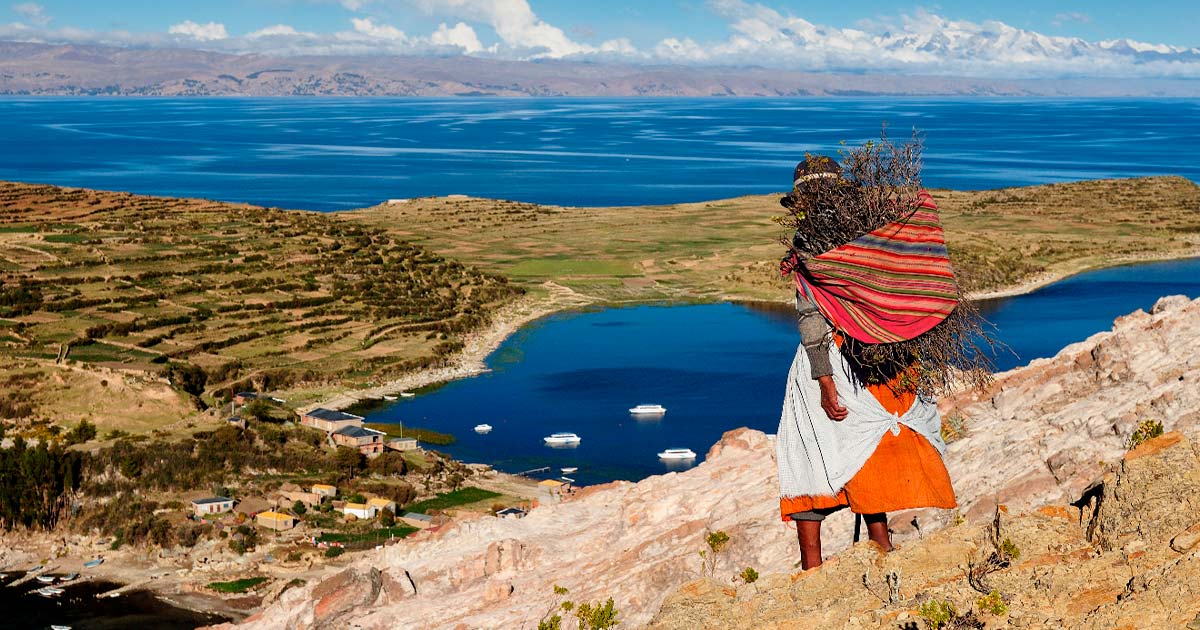Andean Hunter-Gatherers Gathered Far More Than They Hunted!
A new study of human remains found at two archaeological sites in the mountains of Peru calls into question the primacy of hunting in ancient South American hunting-gathering cultures. While there is no doubt that Andean indigenous people relied on both plants and animals as food sources thousands of years ago, this latest research shows they were much more dependent on plants for nourishment than previously believed.
In a paper just published in the journal PLOS ONE, a team of researchers led by University of Wyoming anthropological archaeologist Randy Haas disclosed eye-opening data about the dietary habits of people who lived on Peru’s Andean Altiplano in the Lake Titicaca Basin between 9,000 and 6,500 years ago. After completing a chemical analysis of the skeletal remains of 24 individuals found buried at the archaeological sites of Wilamaya Patjxa and Soro Mik'aya Patjxa, Haas and his colleagues were surprised to discover that these ancient hunter-gatherers consumed a diet composed primarily of plant matter.

The Wilamaya Patjxa archeological site in Peru produced human remains showing that the diets of early people of the Andes were primarily composed of plant materials. (Randy Haas/PLoS ONE)
This contradicts the usual assumption that prehistoric hunter-gatherer societies were heavily dependent on meat, which emerged largely from the anthropological study of hunter-gatherer cultures that survived into the modern era.
“Conventional wisdom holds that early human economies focused on hunting—an idea that has led to a number of high-protein dietary fads such as the Paleodiet,” Haas stated in a University of Wyoming press release. “Our analysis shows that the diets were composed of 80 percent plant matter and 20 percent meat.”
- 10 Jaw-dropping Engineering Marvels of the Inca Empire
- Computer Science Helps Explain Distribution of Hunter-Gatherer Groups
In the Prehistoric Andes, It Was Plants First and Meat Second
Previous evidence collected at these sites on the Andean high plateau (Wilamaya Patjxa and Soro Mik'aya Patjxa are more than 12,000 feet (3,900 m) above sea level proved conclusively that the ancestors of the modern Aymara people hunted large mammals for food. In fact this activity was so essential that ancient Andean men and women both participated in big-game hunting, as was revealed by a 2018 discovery by Haas of the grave of a young female hunter who was buried with her hunting paraphernalia at Wilamaya Patjxa around 7,000 BC.
But regardless of the cultural importance of hunting to the ancestors of the modern Aymara, it turns out they obtained most of their calories from foraging. This was revealed by Haas and his team’s isotopic measurements of the skeletal remains unearthed at the two sites during various excavations over the last decade. The chemical composition of the bones proved their owners had eaten plant food much more frequently than they’d eaten meat, and in greater quantities.
Burned plant remains have been recovered during some of these excavations, and most have been identified as tubers (plants, including potatoes, that grow underground). The teeth of some of the ancient inhabitants of the region show significant wear on the surfaces of the upper incisors, which is in fact consistent with regular tuber consumption. Based on such evidence, Haas now believes that potatoes and other tubers likely comprised the bulk of the ancient Andean people’s diets 9,000 years ago.
“Our combination of isotope chemistry, paleoethnobotanical and zooarchaeological methods offers the clearest and most accurate picture of early Andean diets to date,” Haas declared. “These findings update our understanding of [the] earliest forager economies and the pathway to agricultural economies in the Andean highlands.”
If the ancestors of the Aymaran people were consuming potatoes in the Early Archaic Period (9,700 to 7,000 BC), when Wilamaya Patjxa (the oldest of the two sites) was occupied, they would have been gathering the wild versions, not growing them on their own. Agriculture in the form of plant cultivation was not practiced in the high Andes that long ago, but it is easy to see how foraging activity might have led to plant domestication eventually.
Gathering over Hunting: A Universal Ancient Reality?
The isotopic lab work on the human remains found in the Lake Titicaca Basin was undertaken by Penn State University Ph.D student Jennifer Chen, an aspiring anthropologist who learned her craft working in Haas’ research lab as an undergraduate.
“Food is incredibly important and crucial for survival, especially in high-altitude environments like the Andes,” Chen stated. “A lot of archaeological frameworks on hunter-gatherers, or foragers, center on hunting and meat-heavy diets—but we are finding that early hunter-gatherers in the Andes were mostly eating plant foods like wild tubers."
The type of analysis performed by Chen is based on relatively recent developments in archaeological and anthropological science. The data uncovered by such testing is challenging previous assumptions about ancient diets and lifestyles, at least with respect to the activities of the Aymara indigenous people and their forerunners, who’ve occupied some of the coldest and most oxygen-deprived Andean environments for thousands of years.
- Pet Dogs in the Bronze Age Given Vegetarian Diet!
- From Peas to Prosperity: Researchers Discover the Diet that Shaped the Oldest Cities
While they can only speculate about how their results might translate to the rest of the prehistoric world, Haas and his colleagues suspect their findings do represent a more widespread reality.
“Given that archaeological biases have long misled archaeologists—myself included—in the Andes, it is likely that future isotopic research in other parts of the world will similarly show that archaeologists have also gotten it wrong elsewhere,” he said, referring to the long-held (and now discredited) belief that ancient hunter-gatherer societies always prioritized hunting over gathering.
Top image: Aymara woman by the Titicaca Lake, collecting staples of an Andean Paleo diet.. Source: Rafal Cichawa/Adobe Stock
By Nathan Falde

















